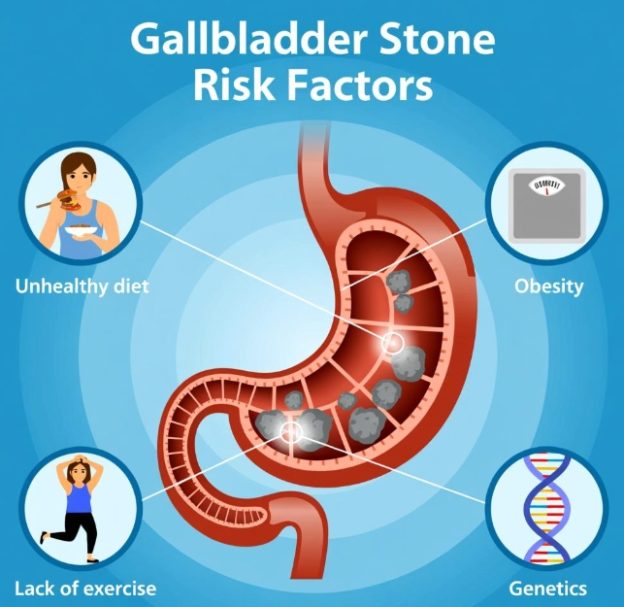Gallbladder stones (cholelithiasis) can remain silent for years, but when they obstruct the cystic duct or migrate into the bile duct they produce a characteristic symptom cluster:
- Biliary colic
Sudden, steady pain in the right upper quadrant or epigastrium builds over 15–30 minutes, lasts 30 min – several hours, and may radiate to the right shoulder or back; it is not relieved by positional change, bowel movement, or antacids . - Post-prandial trigger
Pain typically follows a fatty or large meal as gall-bladder contraction forces a stone against the duct opening . - Nausea and vomiting
Gastric stasis and vagal stimulation produce pronounced nausea with occasional bilious vomiting that accompanies rather than precedes the pain . - Epigastric bloating and belching
Patients describe a tight, gassy sensation and frequent sour eructation that mimics dyspepsia. - Intolerance to fatty foods
Fear of post-meal pain leads to voluntary fat avoidance and sometimes weight loss. - Complication signs
Persistent pain >6 h, high fever, jaundice, dark urine and pale stools suggest stone migration into the common bile duct with possible cholangitis or pancreatitis and require urgent care .
Any recurrent upper-abdominal pain related to meals should prompt abdominal ultrasound and liver-function tests to confirm the diagnosis and plan early cholecystectomy.
| Symptom | Typical Pattern | Alarm for Complication |
|---|---|---|
| Pain | RUQ/epigastric, 30 min–hours, radiates to shoulder | >6 h, constant, severe |
| Nausea/vomiting | Follows onset of pain | Persistent with fever |
| Food trigger | Fatty meal, large dinner | — |
| Bowel | Bloating, belching | Pale stool, dark urine |
| Fever | Absent in simple colic | Present with jaundice |
| Systemic | Well between attacks | Rigors, hypotension |
